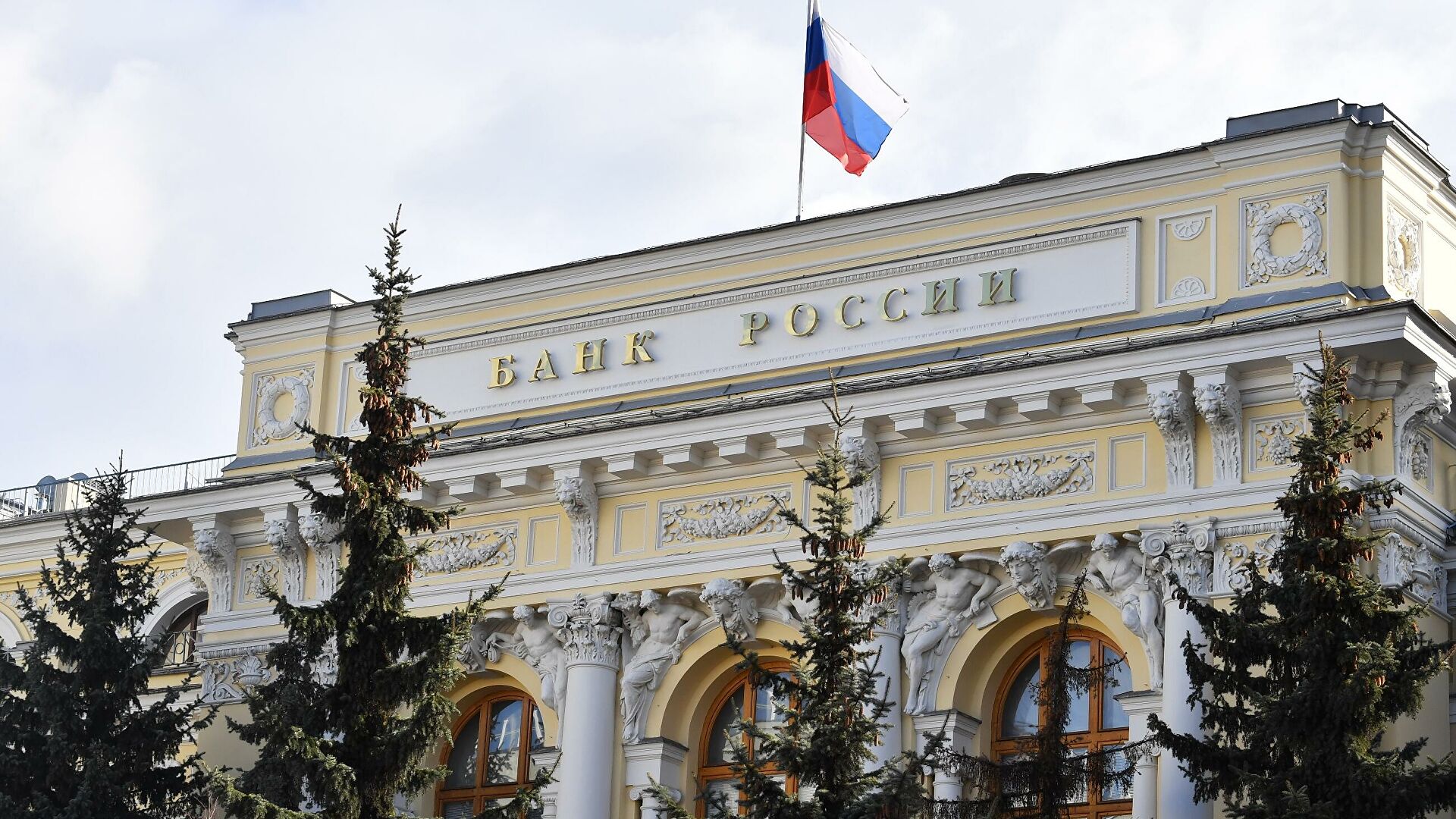War reparations: How West could fund Ukraine with Russian money
 Volodymyr Zelenskyy and Joe Biden (Photo: Getty Images)
Volodymyr Zelenskyy and Joe Biden (Photo: Getty Images)
Against the delays in receiving funding from international partners, Ukraine is exploring alternative ways for quickly raising funds to address social needs, strengthen resilience, and promote economic recovery. Among the potential financing instruments are so-called reparation bonds. What are they, and what is the likelihood of obtaining quick funds in this way read below in an analysis by RBC-Ukraine.
In the preparation of the material, information from publications in foreign media was used, as well as comments from Ukrainian investment banking experts, lawyers, and analysts from leading think tanks.
The West continues to procrastinate in providing financial assistance to Ukraine. This is happening, in particular, due to the efforts of partner countries to resolve legal conflicts related to the possible transfer of seized Russian assets to Ukraine. Simultaneously, discussions are underway regarding the mechanism of potentially using Russian funds as a lure for potential investors - to provide Ukraine with financial resources without transferring Russian assets to it at the moment.
Recently, the business media Reuters published an article in which, perhaps for the first time publicly, the possibility of Ukraine attracting external financing through the use of so-called reparations bonds is mentioned. This instrument could potentially become a relatively quick alternative to international financing for Ukraine in the ongoing war conditions.
The publication of the Reuters article coincided with the start of the World Economic Forum in Davos. This is likely not a coincidence - the possibility of issuing reparation bonds was discussed at the forum.
What are reparations bonds
In the context where Western countries continue to seek legal mechanisms to use $300 billion of frozen reserves from the Russian central bank to benefit Ukraine, reparation bonds would ensure the immediate flow of funds to Ukraine here and now under the guarantee of future reparation payments from Russia to Ukraine.
Similar securities issued by Ukraine could be purchased by governments of partner countries or even, under certain conditions, private investors. These bonds would be backed by the frozen reserves of the Russian central bank, up to $300 billion. However, this would only occur if Russia refused to pay reparations.
In other words, if Russia agrees to pay (which is unlikely), bondholders would receive their rightful payments. If the aggressor country refuses to pay reparations, the bonds would be redeemed using the seized reserves of the Russian central bank.
As noted in a Reuters article, one objection to the idea of Ukraine issuing reparation bonds is that such bonds would be so risky that investors would demand a significant discount. Therefore, Kyiv should not expect to raise substantial amounts through this instrument. The potential sums involved may be far from the mentioned $300 billion.
Furthermore, Western governments may simply not want to transfer ownership rights of Russian reserves to Kyiv. Additionally, Ukraine itself may abandon reparation claims against Moscow as part of some future peace deal.
That's why the ideal investors would be the governments of Western countries. These countries stand to lose a lot if Ukraine fails to resist Russia's aggression. Western governments also can mitigate the risks of the bonds, as they have the authority to determine how Russia's frozen assets will be used. They would also have significant influence over the terms of any peace deal.

Russia must pay for the war against Ukraine (collage by RBC-Ukraine)
The legal basis for using Russian reserves to redeem reparation bonds would be stronger if Ukraine transferred the right to claim compensation for damages against Moscow to Western governments that purchased the bonds.
If Western governments are not willing to buy all reparation bonds, Ukraine could issue multiple tranches. Governments could purchase the riskier tranches, leaving the less risky ones for ordinary investors. This would reduce the discount on the bonds.
But how to entice Western governments to invest in Ukraine's reparations bonds? For them, it would be an additional expenditure of taxpayers' money with no guarantees of returns. Plus, there is the "headache" of a prolonged legal battle with Russia. However, everything is not so straightforward.
Contra spem spero, or pros and cons of reparation bonds
Cons
Most experts interviewed by RBC-Ukraine think that the likelihood of implementing the mechanism of reparation obligations is currently more theoretical, as it depends on numerous factors and third parties. The issuance and successful placement of bonds will not solely depend on Ukraine as a potential issuer.
In the international community, there must primarily be a vision for the future international legal mechanism for holding the Russian Federation accountable, allowing Ukraine to effectively recover damages from the aggressor country, notes Oleksandr Rudenko, an adviser at the Ilyashev and Partners Law Firm. Another key prerequisite is the existence of a mechanism for repaying Russia's debt according to decisions of international courts to recover damages for Ukraine from the frozen reserves of the Central Bank of the Russian Federation in the EU.
"One of the possible steps that could give a positive signal for the issuance of reparation bonds is the decision of EU countries to transfer the income (interest) from the frozen assets of the Central Bank of the Russian Federation in the EU to Ukraine. In particular, this would allow the state as the issuer of reparation bonds to service the issuance and placement or even pay interest to investors on such bonds. This, in turn, would significantly increase the confidence of private and public investors in the liquidity of such bonds," argues Oleksandr Rudenko.
Only if significant legal progress is made in recovering Russian assets for the benefit of Ukraine, and it becomes a prospect within, for example, a year, Ukraine will likely have sources of funding until it gains access to the assets themselves, says Vitaliy Vavryshchuk, Head of the Macroeconomic Research Department at ICU Group. However, if progress in confiscating Russian assets is slow, these assets will not have great value as collateral for debts.
Therefore, until relevant decisions are made, both at the political level and directly at the EU legislative level, Ukraine's ability to independently issue such bonds is quite limited.
According to economist Maksym Kuzhdin from the Center for Economic Strategy, the scenario of financing through reparation bonds seems unlikely for several reasons. Firstly, there is no expectation of a severe shortage of funds in the Ukrainian budget in the short term. The European Union signals readiness to allocate €50 billion to Ukraine over the next four years, even bypassing Hungary's veto, and there is progress in the U.S. Congress in reaching an agreement on financing Ukraine.
Secondly, reparation bonds would be extremely risky for investors, so Ukraine would sell them at a significant discount. This is an undesirable option for the country, as the potential reparations used for reconstruction would be significantly less.
"It makes sense to resort to such an instrument only in extreme cases when direct financing from partners or the rapid transfer of frozen Russian assets to Ukraine is impossible. The issuance and subsequent purchase of reparation bonds by foreign players may be a solution to a potential crisis when public opinion in partner countries is against direct financial inflows. Purchasing bonds can transform this process from charity to investment," notes Maksym Kuzhdin.

Ukraine is claiming the frozen assets of the Central Bank of Russia (photo: cbr ru)
Hypothetically, with the help of bonds, Ukraine could expect to attract up to 300 billion euros, equivalent to the sum of Russian sovereign assets frozen in Western countries. However, in practice, finding enough investors to raise such an amount will likely be nearly impossible. Currently, the total value of all Ukrainian external debt bonds in circulation with maturity dates between 2024 and 2041 is only about 23 billion U.S. dollars.
Since the success of reparation bonds ultimately depends on the West's readiness to confiscate frozen Russian assets, according to experts, Ukraine should advocate for the swift direct transfer of these assets without intermediate instruments that could result in a loss of part of the sum. There is currently some progress among G7 countries on this issue, and there is a possibility that a decision may be reached.
Despite all obstacles
Reparation bonds are currently seen as one of the best financing mechanisms for Ukraine, according to Oleksandr Parashchiy, Head of the Analytical Department of the Concorde Capital Investment Company.
Moreover, if Ukraine makes an effort, it can issue such bonds as early as 2024. The process could start with the restructuring of existing Eurobonds, which the government plans to carry out in the coming months.
"As part of the restructuring of bonds for $20 billion (plus accrued interest of $4 billion), Ukraine could partially exchange them for reparation bonds already in 2024. This would create a secondary market for such bonds this year and, consequently, reveal their market price. After that, it is possible to consider whether it is worth attracting new funds under such bonds," argues Oleksandr Parashchiy.
A logical argument is that if Western governments are serious about the idea of confiscating Russian assets, it will be challenging for them to explain why they are not willing to buy such bonds. The more such securities Western governments buy, the greater their motivation will be to extract funds from Russia.
As for private investors, they will be willing to buy reparation bonds when they see a liquid secondary market for such securities, i.e., when they can sell them at any time.
Among the advantages of reparation bonds, Oleksandr Parashchiy mentions the fact that payments for these securities should not come from the state budget.
"This is better than traditional debt financing because raising such funds will not increase Ukraine's state debt statistics and may even decrease it if Ukraine transfers part of the existing debt into such bonds," argues Oleksandr Parashchiy.
The only drawback is the complexity of implementing such an idea. However, there is nothing impossible, according to the sources of RBC-Ukraine.
It is currently challenging to determine the sum Ukraine could attract with reparation bonds, but it will certainly be more than what our partners are willing to provide in the form of grants today, says Oleksandr Parashchiy. This could involve tens of billions of dollars. The likelihood of prompt payments on such securities will determine the sum that can be obtained.

Currently, it is difficult to say what sum Ukraine will be able to attract through reparation bonds (NYSE, photo - Getty Images)
According to Artem Shcherbyna, Chief Investment Officer, Head of R&D at Capital Times Investment Company, Ukraine could attract $60-90 billion through reparation bonds. These funds could be sufficient for Ukraine for two years of war.
However, the initial bond placements are unlikely to be significant, adds Oleksandr Rudenko. "In any case, the potential amounts of funds raised through reparation bonds will depend on the effectiveness of the future international legal mechanism for holding the Russian Federation accountable for the damages inflicted on Ukraine, as well as the effectiveness of identifying, arresting, and future enforcement of recovery on Russian assets located in foreign jurisdictions," he reminds.
At the same time, it is important to consider that an essential element of the bond issue procedure is establishing Ukraine's credit rating as the issuer. Currently, the determination of Ukraine's credit rating is suspended due to military actions. However, such a rating will be low at present. Even if a special procedure is determined for the placement of reparation bonds, within which there is no mandatory requirement for determining the credit rating, Ukraine's financial obligations for the repayment of such bonds and interest until their repayment from Russian assets will be accounted for as national debt. This, in turn, will not contribute to the improvement of Ukraine's credit rating as a borrower in the future and will create pressure on the government in planning the expenditure part of the state budget in the future.
It is crucial to understand that in the case of reparation bonds, it is unlikely to be a new source of financing for Ukraine through such bonds, as noted by the acting Executive Director of the Independent Association of the Banks of Ukraine. Rather, similar bonds may eventually become an alternative to some of the financial aid that Ukraine currently receives on a non-repayable basis.

